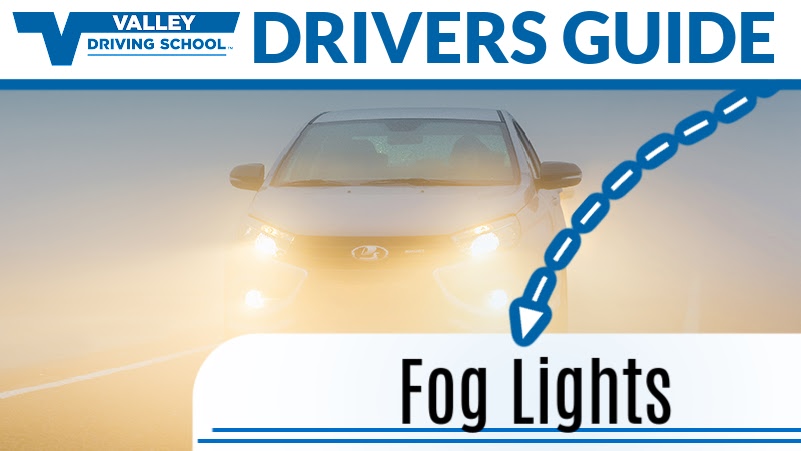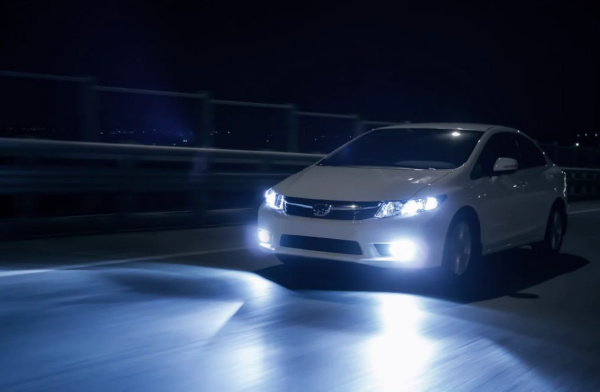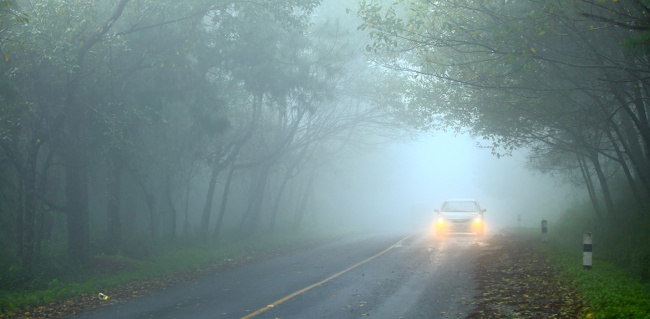If you live on the west coast, you’re likely very familiar with fog, but did you know that it can actually be considered a type of low-lying cloud? In this article, we cover why fog lights work the best to navigate these masses of tiny water droplets or ice crystals whenever they appear.

What is fog?

Put simply, fog is condensed water vapor. During the condensation process, tiny liquid water droplets are formed and suspended in the air, sometimes creating an enchanting spectacle, sometimes a scene right out of a zombie movie that is terrifying to drive through.
What are fog lights?
Fog lights are the lights that are mounted lowest on your vehicle’s front end. They are angled down and use a wide lens that creates a bar-shaped beam to best illuminate the road ahead of you during adverse weather conditions. They tend to be designed to have a sharp cut-off at the top, and are installed low and aimed at a sharp angle towards the ground.
Fog Lights vs. Headlights

Since fog lights appear to be quite dim, you might think that your headlights, or even your high beams, would provide the best visibility. The opposite is actually true, and in instances of heavy fog or snow, these lights can limit your visibility because the relatively shallow angle they’re aimed at reflects off of the water droplets or ice crystals and goes right back into your eyes. This not only makes it harder to see the road, but oncoming traffic as well. If you’re driving at night, you’ll find the reflection is often worse.
How do fog lights work?
Unlike your headlights or high beams, fog lights work by illuminating only the road in front of you with their sharp and wide angled lighting. This keeps their beams from directly hitting the fog or snow and reflecting back at you. A common misconception is that fog lights are yellow and that is what keeps them from reflecting, but there are many white coloured fog lights - it’s actually the angle that does the trick!
When should you use fog lights?

Aside from their main function being right in their name, fog lights work best in most instances where poor weather and situations that affect your visibility. Drivers should use them when they come across fog, but they can also come in handy when driving in rain, mist, snow, and even instances where there is significant sand or dust in the air.
What are the risks and benefits of using fog lights?
The benefit is an increase in visibility, which translates to an increase in safety. However, since fog lights only illuminate the road directly in front of you, your surrounding visibility is affected, which can make it dangerous to drive at high speeds while using them. A big risk of using fog lights comes down to handling oncoming traffic. Even when aimed properly, fog lights can be quite bright and affect the visibility of other drivers on the road. To combat this, the same regulation that the Motor Vehicle Act and ICBC have for high beams should be used for fog lights: “... dim your high beams when you are within 150 metres or about 500 feet of the other vehicle.”
When should you not use fog lights?
Since fog lights fill in the space between regular headlights and fill in the void between the two beams so that you can see what’s directly in front of your vehicle, it’s unadvisable to use fog lights on a regular basis. This is because having the road surface lit up directly in front tends to create eye dilation, which can reduce visibility rather than increasing it. If the weather is ok, keep the fog lights at bay!
